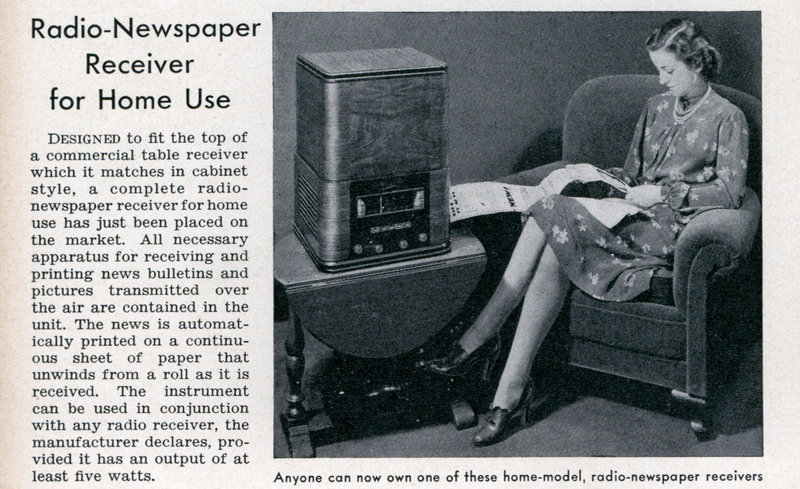
In an approach rather different from Microsoft’s vision of content delivery in the future, which I described yesterday, MediaNews Group has announced plans for I-News, a system that will print your own customized newspaper on your own printer:
The “individuated” stories selected by each reader are sent to a special printer being developed for MediaNews that each customer would have at home. The printer will format the stories and print them or send them to a computer or mobile phone for viewing later in the day.
Ads will be delivered as well. Where possible, the ads will be matched to each reader’s choice of stories. For example, a reader who selects high school sports stories might receive ads from retail sports stores, or skiers might receive ski-related ads.
Moreover, MediaNews suggests, once this notion takes hold, the company might only have to print and deliver actual newspapers three days a week:
Our greatest expense is printing and delivering a newspaper,” [MediaNews executive V.P. for sales and marketing Mark] Winkler said. “Eliminating it four days a week would be significant.
Haven’t we seen this before? Yes indeed. It was in 1939 that radio station W9XZY, owned by the St. Louis Post-Dispatch, inaugurated a trial of the first daily newspaper edition transmitted by radio signals to giant facsimile printers located in homes. (See illustration at top of this page.) The technology had been under development since 1934. (And yes, fax technology was around that long ago; in fact, the first fax patent was issued in France in 1843.)
The Miller family in Pittsfield, Mass., owners of the Berkshire Eagle, in an ambitious plan filed away in 1941 just before Pearl Harbor, included this idea on their list of post-war strategies (along with offset printing, acquisition of neighboring newspapers, and television broadcasting). In the 1950s they got as far as installing a giant fax machine that printed instantaneous headlines on a roll of paper that scrolled in a glassed-in display box outside the building. But this idea never went much farther, in St. Louis, Pittsfield or anywhere else. (Here’s a bit more about the post-war continuation of the faxed newspaper idea, and its demise.)
Fax editions were tried again in the 1980s as a way to deliver news to offices as fax machines proliferated; these trials included some customized editions. The advent of the Web spiked that system, we thought for good.
Why on earth would MediaNews want to try this all over again? Sure, there are some fresh bells and whistles in this version: the home printer could send the stories to a computer or mobile phone, according to Winkler. But wait, I can already get stories on my computer or mobile phone. And with an RSS feed or other tools, I can customize those stories to my interests. Why do I need a MediaNews-supplied device in my house as intermediary?
It’s difficult to imagine a lot of enthusiasm greeting the i-News concept. Among the grounds for skepticism:
If MediaNews truly is interested in cutting print down to a few days a week, that’s a laudable idea. As Winkler commented: “About 65 or 70 percent of a newspaper’s revenues come from ad sales on Thursday, Saturday and Sunday, so we’ll keep printing on those days.” And as I’ve been saying for months, most of the rest of the revenue would probably shift into those days if the rest were eliminated.
It doesn’t take a new gadget to make possible the inevitable move to cutting print to two or three days a week (or even to once a week) and being digital all the time; it’s already the right thing to do. Let’s just get it over with.
But by the way, if I have to start printing my own newspaper at home, I want a nice walnut-veneer printer cabinet like that lady in the picture has.
[Updated and disclosure 3/09/08 — as regular readers know, I worked for MediaNews Group for 13 years ending early in 2008.]